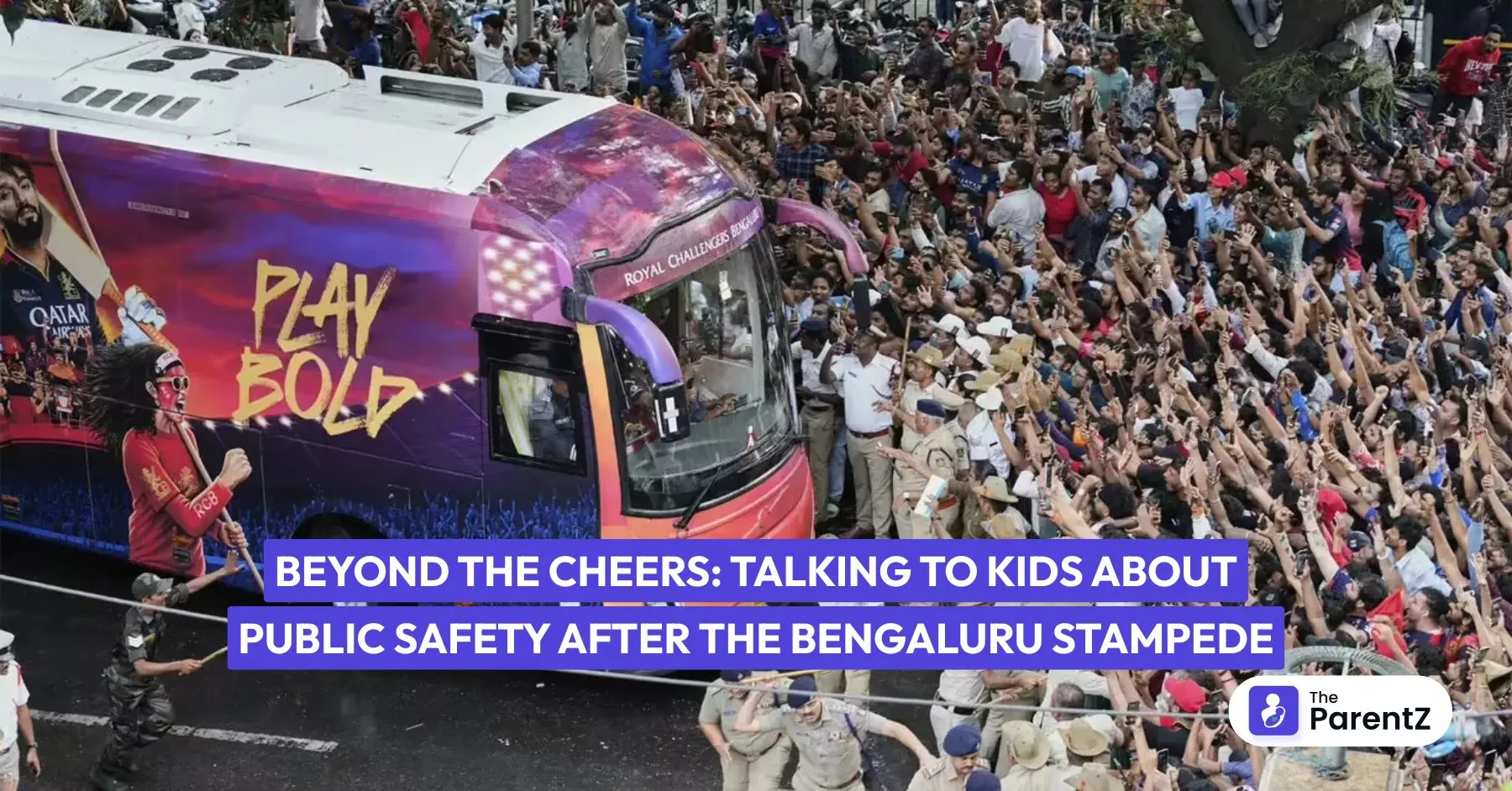The celebration should have been pure joy. After 18 long years, Royal Challengers Bengaluru finally lifted their first IPL trophy. Across India, millions of fans erupted in celebration, tears streaming down their faces as they watched Virat Kohli's emotional victory. Kids stayed up past bedtime, adults hugged strangers, and families danced in living rooms. Cricket had given them a moment of pure happiness.
But that moment of triumph turned into an unspeakable tragedy outside Bengaluru's Chinnaswamy Stadium on Wednesday. What was meant to be a celebration became a nightmare that claimed 11 lives and injured 47 people. Among the dead were teenagers—Divyanshi, just 13 years old, Chinmayi Shetty, 19, and Prajwal, 20. Young lives, snuffed out in seconds because of a crowd gone wild.
The numbers tell a horrifying story. Over 2 lakh fans showed up at a venue that could safely hold only 35,000 people. People climbed electric poles, scaled walls, and clung to trees, all for a glimpse of their cricket heroes. In their desperation to see their idols, they forgot the most basic truth: no celebrity, no matter how beloved, is worth dying for.
The Hard Truth About Hero Worship
Parents need to have difficult conversations with their children about hero worship in India. The obsession with celebrities—whether it's Rohit Sharma, Virat Kohli, MS Dhoni, or movie stars like Allu Arjun—has reached dangerous levels. Kids see adults lose their minds over a cricket match or a movie premiere, and they think this is normal behavior.
It's not normal. It's dangerous.
The Bengaluru stampede wasn't an isolated incident. Just months earlier, in December 2024, a similar tragedy struck during the 'Pushpa 2' premiere in Hyderabad. Revathi, a 35-year-old mother, died in the chaos while her 9-year-old son, Sri Tej, fought for his life on a ventilator. A family destroyed because people couldn't control themselves around a movie star.
These heroes that children worship—the cricketers, the actors, the celebrities—they go home to their families after these events. They sleep peacefully in their beds while the families of the victims grieve forever. When someone dies in a stampede, the cricketers don't attend their funeral. When someone is crushed to death, the actors don't pay for the hospital bills.
Teaching Kids the Real Value of Life
Children need to understand that their lives are more precious than any autograph, any selfie, or any moment of celebrity contact. Every child has a family waiting at home—parents who worry, siblings who love them, friends who need them. That life, that connection to family and community, is worth infinitely more than a few seconds near a famous person.
Parents must be brutally honest: "No celebrity is worth dying for. No cricket match is worth getting hurt for. You are more important to us than any trophy or any star."
This doesn't mean children can't admire their heroes or feel excited about sports and entertainment. Admiration is healthy. But when that admiration turns into a dangerous obsession, when it makes people forget basic safety, it becomes a problem.
When Crowds Are Safe and When They're Not
The July 2024 T20 World Cup victory parade in Mumbai shows that large crowds can be managed safely. A lot of people gathered to celebrate India's cricket team, but proper planning, adequate space, and crowd control measures prevented tragedy. No one died. No one was seriously injured. Families went home happy and whole.
What made the difference? Organization, space, and respect for safety protocols.
Safety Rules for Young Fans
If families decide to attend public celebrations—and there's nothing wrong with celebrating—they must follow strict safety rules:
Before Going:
- Check if the event is officially organized with proper crowd-control measures
- Avoid events where the expected crowd exceeds the venue capacity
- Plan exit routes and meeting points in case the family gets separated
- Leave jewelry and valuables at home
- Wear comfortable, closed-toe shoes that won't slip off
At the Event:
- Stay together as a family, hold hands with younger children
- Position yourselves near exits, never in the center of large crowds
- If the crowd starts pushing, don't fight against it—move with the flow toward the nearest exit
- If someone falls, help them up immediately
- Watch for signs of overcrowding and leave early if necessary
Teaching Children to Recognize Danger:
- If they can't move their arms freely, the crowd is too dense
- If people around them are struggling to breathe, it's time to leave
- If they feel lifted off their feet by the crowd pressure, they're in serious danger
- Trust their instincts—if something feels wrong, it probably is
When the Worst Happens
Children need to know what to do in a stampede situation:
- Don't fall down. If they trip, get up immediately
- If they can't get up, curl into a ball and protect their head and neck
- Move diagonally toward the nearest exit, not against the crowd flow
- If separated from parents, find a police officer or security guard
- Don't try to pick up dropped items—nothing is worth their safety
Parents must also stay calm and focused. Panic spreads quickly in crowds and makes dangerous situations worse.
Building Civic Sense
The real solution isn't avoiding all public events—it's building civic sense in children. They need to understand that they're part of a community and that their actions affect others. When they push in a crowd, they might hurt someone. When they climb barriers or poles, they create chaos that endangers everyone.
Children should learn to:
- Follow instructions from authorities and security personnel
- Respect barriers and designated areas
- Think about how their actions affect others
- Prioritize safety over excitement
The Painful Reality
The families of those 11 victims in Bengaluru are living every parent's worst nightmare. Divyanshi's parents sent their 13-year-old daughter to celebrate and received her lifeless body instead. These weren't bad parents or careless children—they were ordinary families caught in extraordinary chaos.
Their pain should serve as a wake-up call for every parent and child in India. Hero worship has gone too far when it costs lives. The excitement of seeing a celebrity has become too dangerous when children die for it.
Cricket will always be there. Movies will always be made. Heroes will always exist. But each child's life is irreplaceable. Each family's wholeness is sacred.
Conclusion
The next time children beg to attend a crowded celebration, parents must ask: "Is this worth risking everything we have?" More often than not, the answer should be no. And when the answer is yes, it must come with preparation, caution, and an unwavering commitment to safety over spectacle.
The cheers will fade. The trophies will gather dust. But the children who come home safe will grow up to create their own moments of joy—moments that don't require risking everything they hold dear.








Be the first one to comment on this story.